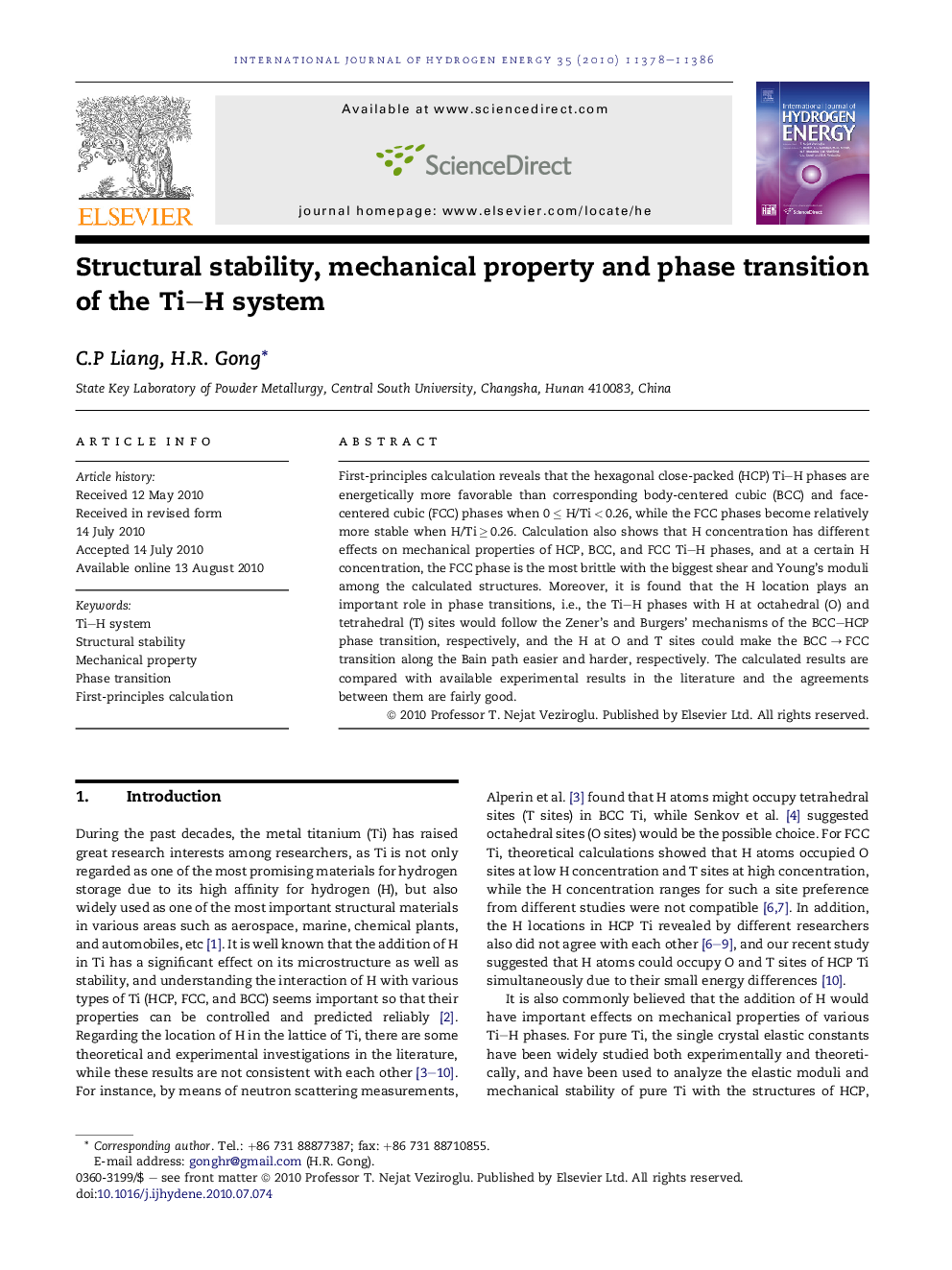| Article ID | Journal | Published Year | Pages | File Type |
|---|---|---|---|---|
| 1276739 | International Journal of Hydrogen Energy | 2010 | 9 Pages |
First-principles calculation reveals that the hexagonal close-packed (HCP) Ti–H phases are energetically more favorable than corresponding body-centered cubic (BCC) and face-centered cubic (FCC) phases when 0 ≤ H/Ti < 0.26, while the FCC phases become relatively more stable when H/Ti ≥ 0.26. Calculation also shows that H concentration has different effects on mechanical properties of HCP, BCC, and FCC Ti–H phases, and at a certain H concentration, the FCC phase is the most brittle with the biggest shear and Young’s moduli among the calculated structures. Moreover, it is found that the H location plays an important role in phase transitions, i.e., the Ti–H phases with H at octahedral (O) and tetrahedral (T) sites would follow the Zener’s and Burgers’ mechanisms of the BCC–HCP phase transition, respectively, and the H at O and T sites could make the BCC → FCC transition along the Bain path easier and harder, respectively. The calculated results are compared with available experimental results in the literature and the agreements between them are fairly good.
